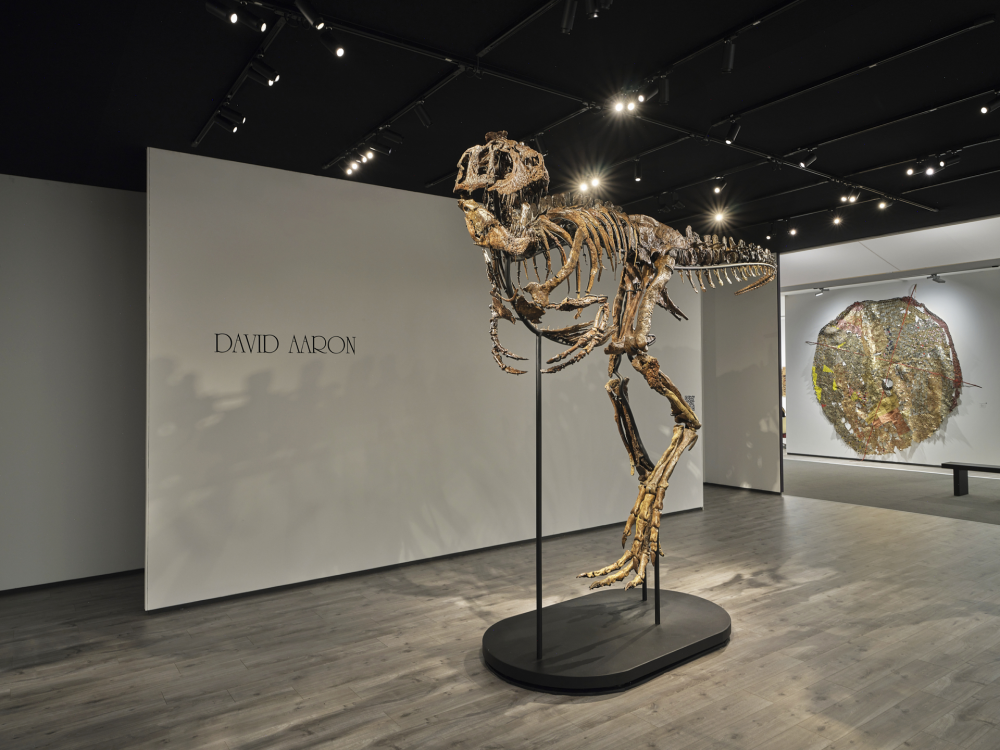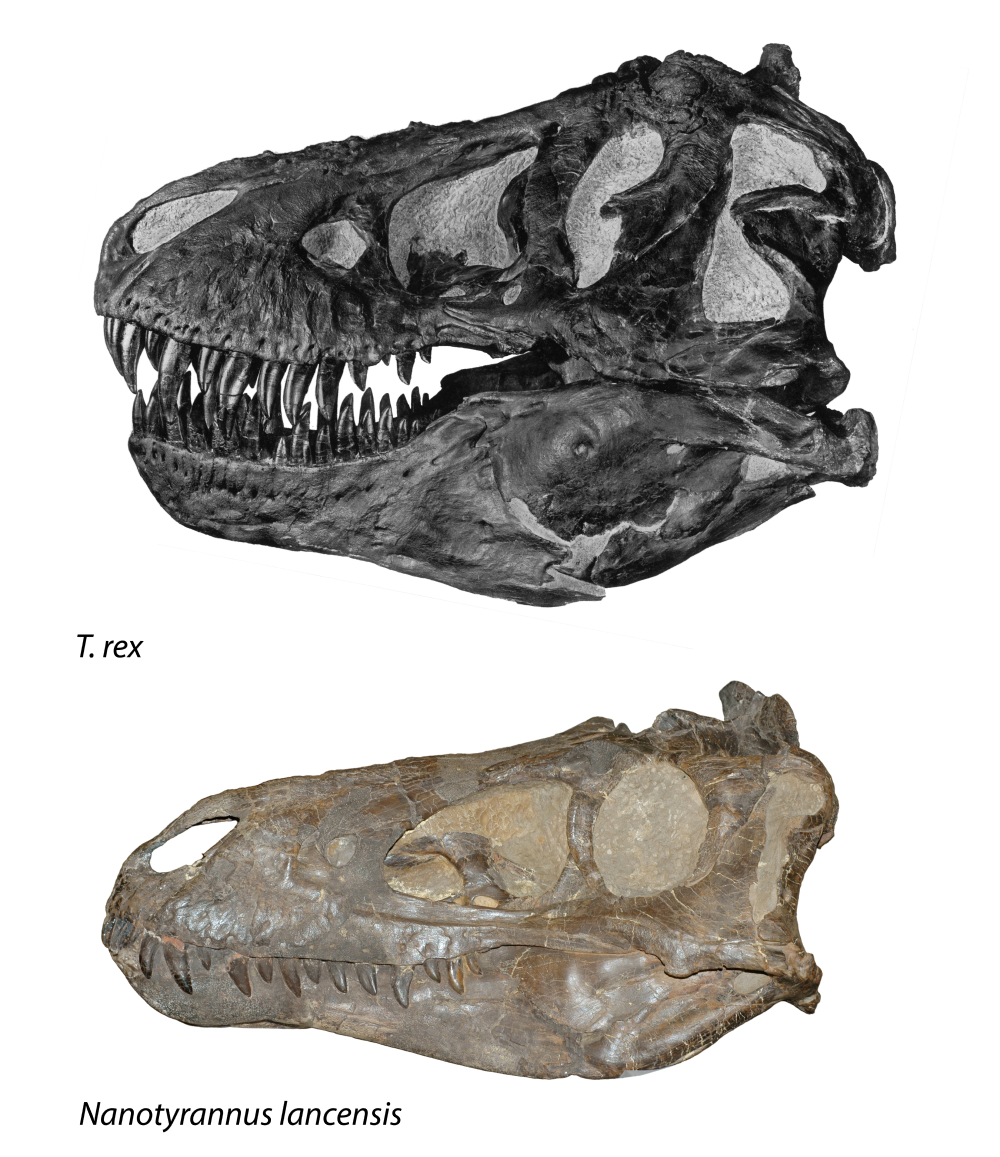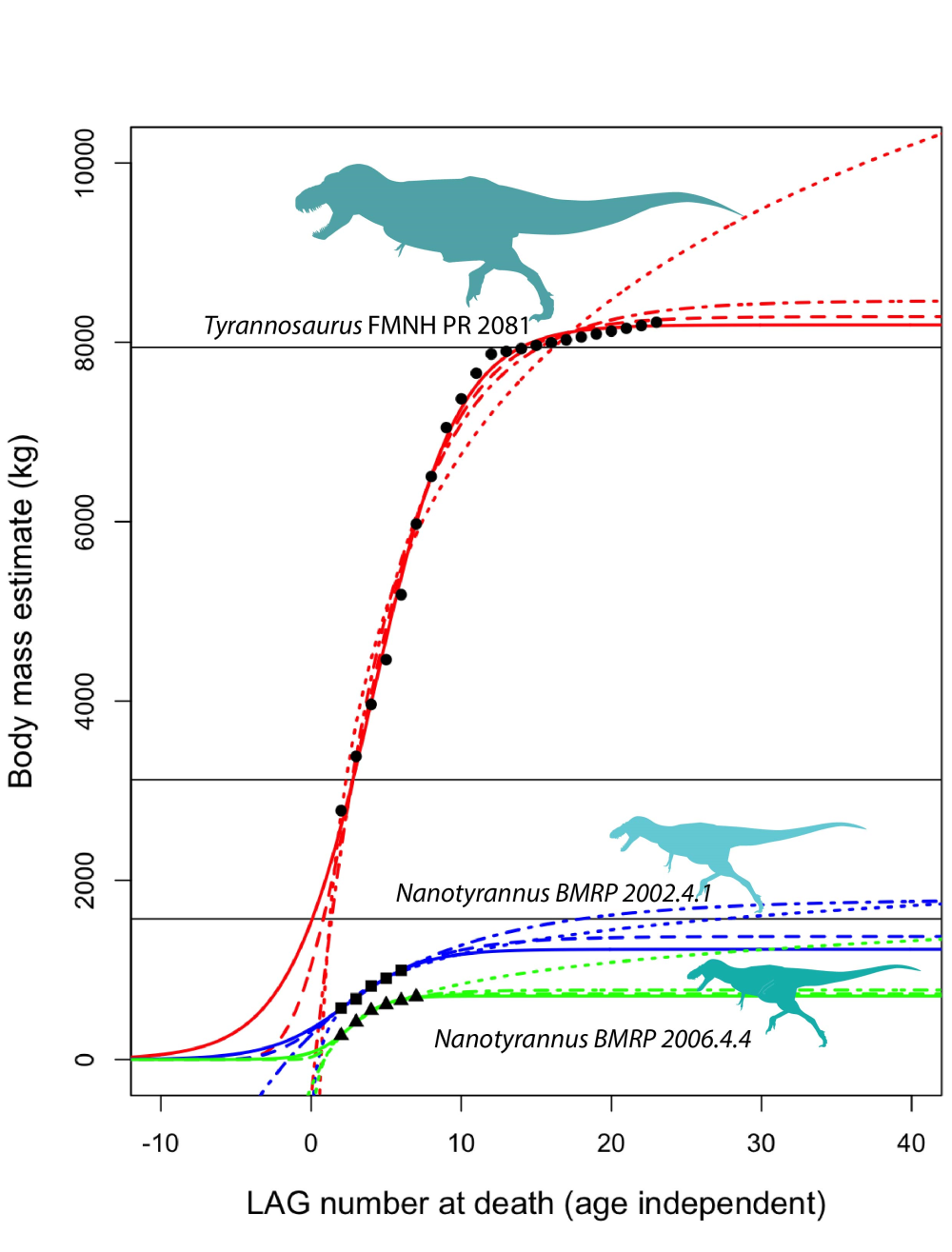A big debate about small Tyrannosaurus rexes has been raging among the palaeontological community for decades. The debate rests on remains found in the US that are less than half the size of a full-grown T. rex: are these really juvenile T. rexes we’re looking at? Or are they a separate species? The opposing contender, some paleontologists claim, is Nanotyrannus lancensis, which roughly translates to “pygmy or dwarf tyrant”. Now, new research argues this is indeed what we’re looking at in the case of many “juvenile T. rex” specimens.
The first Nanotyrannus was discovered in 1942 in Montana based on a specimen now known as Chomper that was initially identified as Gorgosaurus – another big Tyrannosaur whose fossilized stomach contents recently revealed they had a taste for baby dinosaur drumsticks, those scoundrels. Chomper is now up for auction at London’s David Aaron for a cool $20 million.
The scientific community has since gone back and forth for decades in the debate of whether Chomper – and Jane and Petey, two other small “T. rex” fossils – are juvenile T. rexes or Nanotyrannus, so why has it been so difficult to settle?

Chomper on display.
“As animals go from juveniles to adults, many things change,” explained palaeontologist at London’s Natural History Museum, Dr Susannah Maidment, who was not involved in the new study, to IFLScience. “A big issue with the fossil record is that, because we have relatively few individuals of each species, it’s difficult to distinguish which features change as an animal grows from a juvenile to an adult, vs. which features are characteristic of specific species.”
As Dr Maidment pointed out, Nanotyrannus does have features that are different from T. rex, but whether these are because it was not fully mature when it died, or because they’re different species is incredibly difficult to determine without a complete growth series of animals that we’re certain belong to T. rex.
“As juveniles grow rapidly (especially in dinosaurs, where they hatched out of relatively small eggs), one way this can be tested is to determine if Nanotyrannus had stopped growing already when it died. If it was an adult when it died, the features that distinguish it from T. rex are much more likely to be because it was a different species, rather than because it was a juvenile,” she continued.
“We can determine how fast it was growing by cutting up the bones and looking at them down a microscope, because bone tissue is organised differently in fast-growing animals vs. those in which growth had slowed or virtually ceased. The problem is that when a fossil is extremely significant, we might not want to cut it up, and sometimes the growth lines aren’t clearly preserved.”

Tyrannosaurus AMNH 5027 skull compared to the holotype skull of Nanotyrannus lancensis, CMNH 7541 from the Hell Creek Formation of Montana.
Image credit: Photos of Nanotyrannus courtesy Larry Witmer, photos of T. rex courtesy AMNH
New research from scientists at the University of Bath and University of Chicago states that Nanotyrannus is a distinct species as the fossils show it has unique traits not seen in T. rex. Were it the case that “Nanotyrannus” were actually just juveniles waiting to develop into adults, we would expect to see some crossover.
Furthermore, they state the growth rings in Nanotryannus also prove it wasn’t a juvenile T. rex. That’s because they are more closely packed towards the outside of the bone, indicating their growth rate was slowing down as it does in adulthood. Were it a fast-growing juvenile, we would expect the growth rings to be regularly spaced.
By modeling this data they were able to show that Nanotyrannus would’ve reached its maximum adult size at around 5 meters (16 feet) tall and weighing between 900 to 1,500 kilograms (1,984 to 3,307 pounds), making it just 15 percent the size of an adult T. rex, which as an adult weighed a hefty 8,000 kilograms (17,637 pounds).
“When I saw these results I was pretty blown away,” said Dr Nick Longrich in a statement. “I didn’t expect it to be quite so conclusive. If they were young T. rex they should be growing like crazy, putting on hundreds of kilograms a year, but we’re not seeing that.”

Growth curves of Nanotyrannus and Tyrannosaurus suggest that Nanotyrannus achieved a much smaller adult body size than T. rex.
Image credit: Evan Saitta and Nick Longrich, from Longrich and Saitta (2024)
“We tried modelling the data in a lot of different ways and we kept getting low growth rates. This is looking like the end for the hypothesis that these animals are young T. rex,” he concluded.
So, if the proof was in the growth rings all along, why did it take so long to get here? As Dr Maidment explained, there are a lot of complexities when it comes to judging a dinosaur’s age from growth rings, not least because the earliest ones laid down are obliterated by later remodeling, meaning adult bones don’t contain a full growth record.
“[D]ifferent bones appear to preserve growth records to different degrees,” Maidment continued. “Hind limb bones are generally considered to be the best for recording a growth record, but we might not want to cut up a very nicely preserved limb bone, and it’s not totally clear whether other bones, like ribs, for example, record an accurate record of growth.”
“Some dinosaur groups don’t appear to have deposited growth rings, growing continuously throughout their lives (this is especially true for some of the largest), while some record periods of slow growth, but it’s not clear that these are annual. Finally, we don’t really have a good grasp on whether or how much growth rate was affected by environment, and it’s likely that this varied in different dinosaur groups depending on their size, metabolism and life history strategies.”
As we’ve seen with the ongoing debate as to whether Spinosaurus was a “giant stork” or an underwater hunter, palaeontology can battle it out to the bitter end. “Bone histology can tell us lots of things, but also frequently throws up many questions,” Maidment said.
So, for now, are you team juvenile T. rex? Or does tiny tyrant Nanotyrannus rule?
The study is published in Fossil Studies.
Source Link: Nanotyrannus Vs Juvenile T. Rex: Is The Decades-Long Debate On “Teenage” Tyrannosaurs Over?